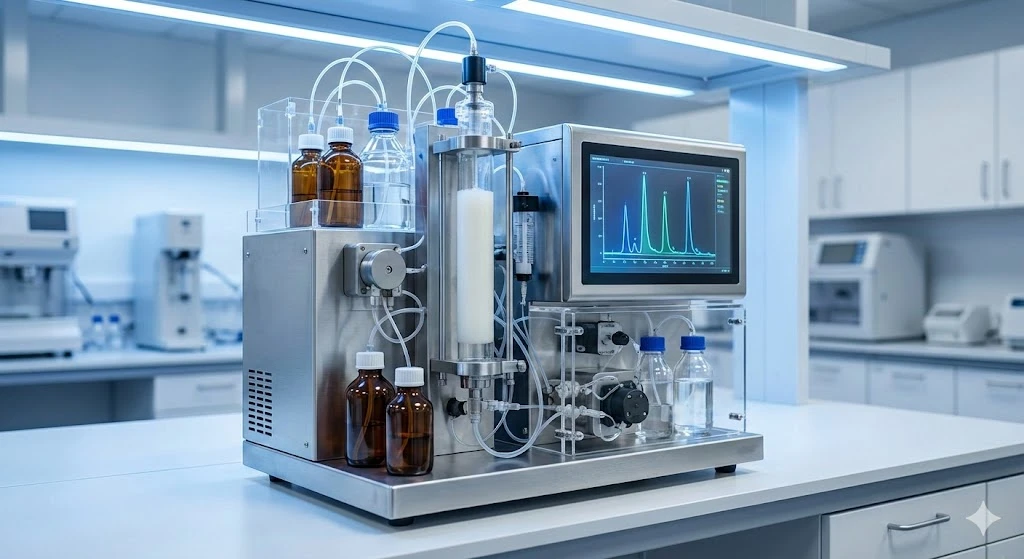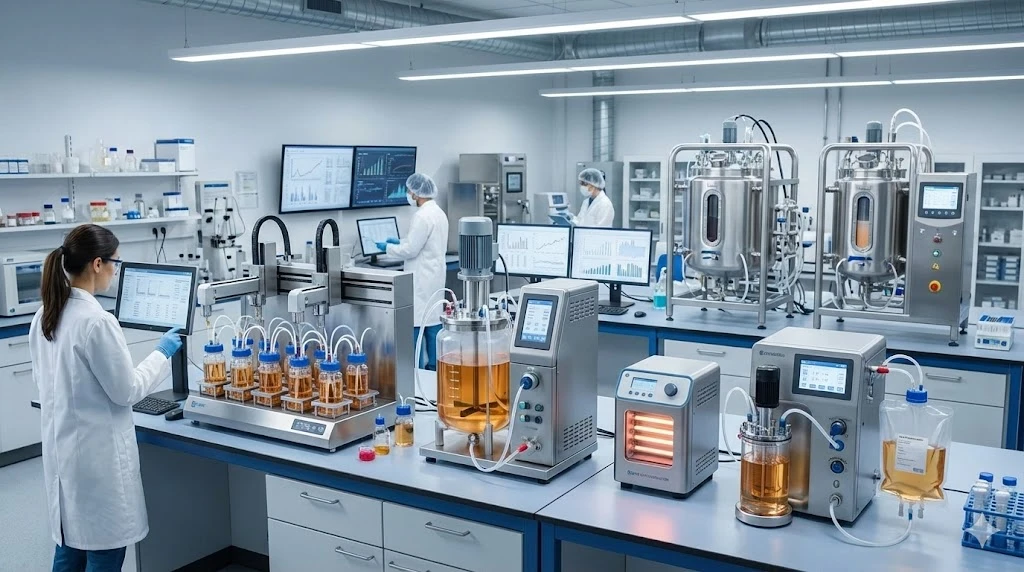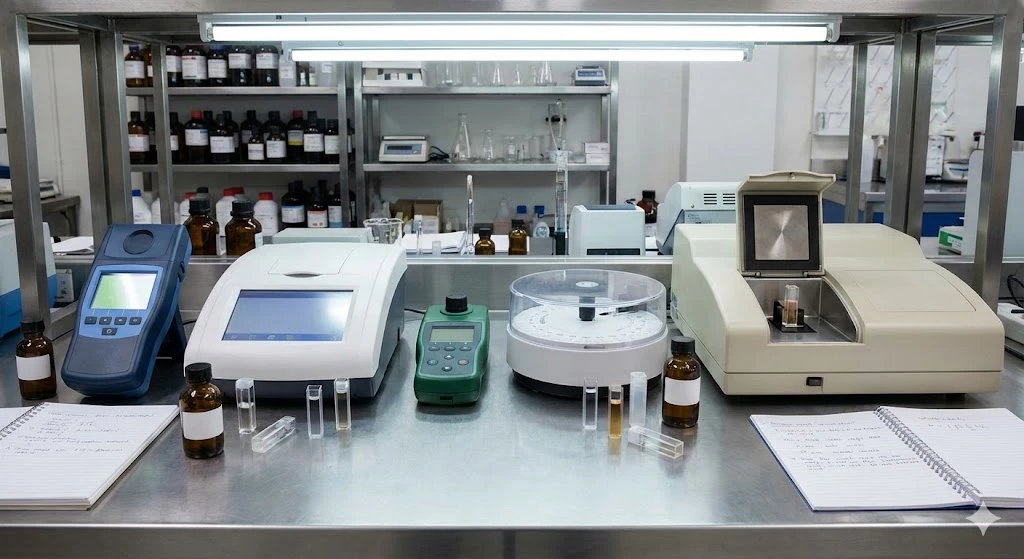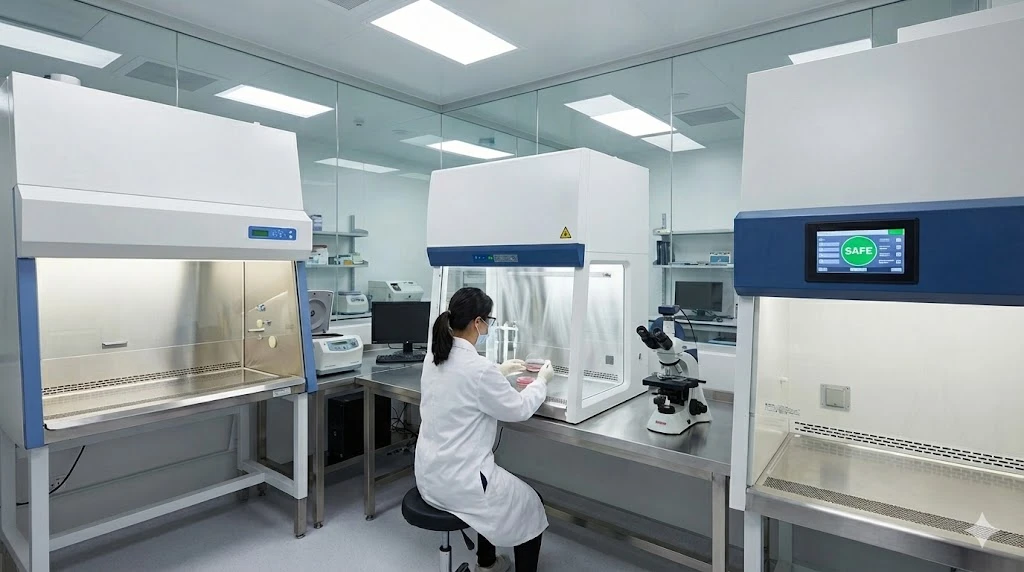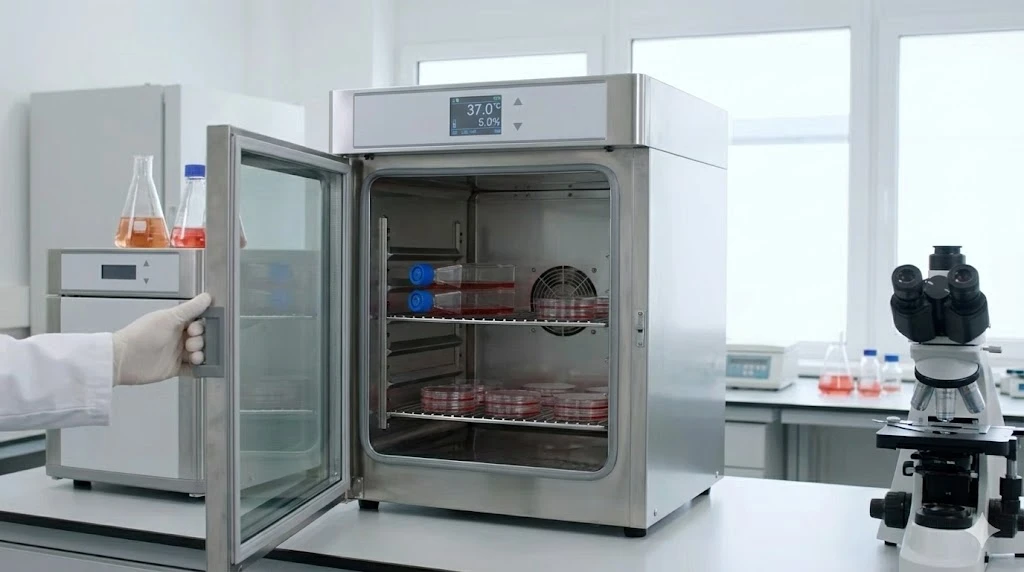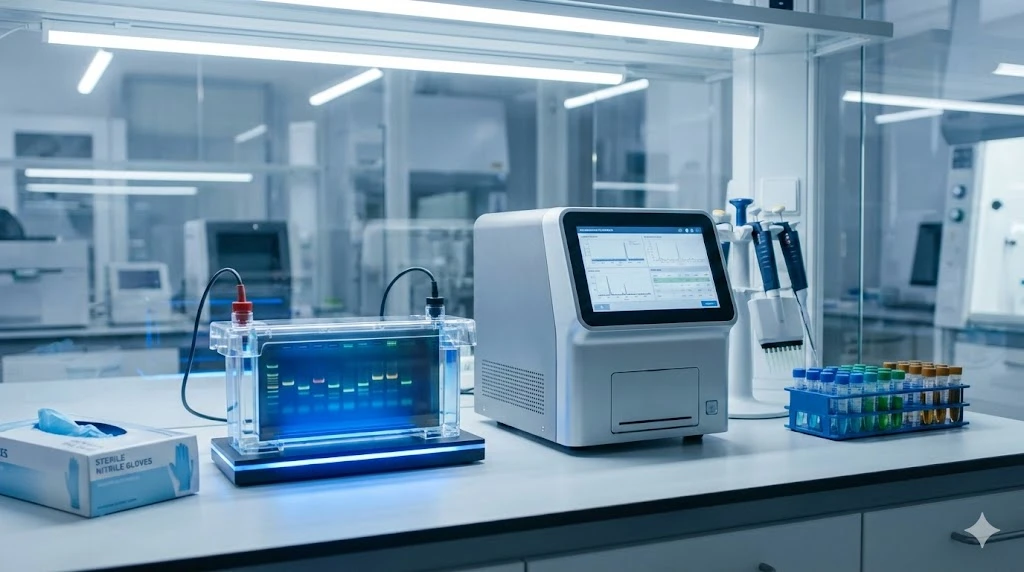Basics of Potentiostats and Galvanostats: Principles and Essential Modes for Battery Testing

ImageFX (2025)
In the relentless pursuit of more efficient and sustainable energy solutions, battery technology stands at the forefront of innovation. From powering electric vehicles and grid-scale storage to enabling portable electronics and medical devices, the performance, safety, and longevity of batteries are paramount. At the heart of this critical research and development lies a pair of indispensable instruments: the potentiostat and the galvanostat.
For lab professionals, understanding these devices is not merely theoretical; it is fundamental to conducting accurate, reproducible, and insightful electrochemical experiments. These instruments provide the precise control over electrical parameters necessary to characterize new materials, optimize cell designs, and diagnose performance issues in electrochemical systems. This article delves into the core principles of potentiostats and galvanostats and explores their essential operating modes, particularly as applied to the demanding field of battery testing. Mastering these tools is key to accelerating the discovery and deployment of the next generation of energy storage solutions.
Understanding Potentiostats and Galvanostats: The Core of Electrochemical Control
Potentiostats and galvanostats are sophisticated electronic instruments designed to control and measure electrical variables in an electrochemical cell. While they often appear as a single unit (a "potentiostat/galvanostat"), their fundamental modes of operation are distinct and serve different experimental objectives.
A potentiostat is an instrument that controls the potential (voltage) difference between a working electrode and a reference electrode in an electrochemical cell, while simultaneously measuring the resulting current. Its primary function is to maintain a constant potential or to sweep the potential through a defined range, allowing researchers to observe how the current responds to these changes. This is crucial for studying reaction kinetics, diffusion processes, and phase transitions at electrode surfaces.
Conversely, a galvanostat is an instrument that controls the current flowing through an electrochemical cell, while measuring the resulting potential (voltage) response. It maintains a constant current or applies a specific current profile, enabling the study of how the cell voltage changes under a defined load. This mode is particularly vital for simulating real-world charge and discharge cycles of batteries and for determining capacity and cycle life.
Key Components and Operation:
Both instruments typically employ a three-electrode setup, which is critical for accurate and stable measurements:
Working Electrode (WE): The electrode where the electrochemical reaction of interest occurs. In battery testing, this is often the anode or cathode material under investigation.
Reference Electrode (RE): An electrode with a stable and well-defined potential, used to measure the potential of the working electrode accurately without drawing significant current.
Counter Electrode (CE) / Auxiliary Electrode: An electrode that completes the electrical circuit and carries the current required by the working electrode. It ensures that the current flowing through the working electrode does not affect the potential of the reference electrode.
The core of both instruments is a control loop that continuously adjusts the output to maintain the desired parameter (potential for potentiostat, current for galvanostat) while measuring the corresponding response. This precise feedback mechanism allows for highly controlled and reproducible experimental conditions.
Essential Modes for Battery Testing and Characterization
The versatility of potentiostats and galvanostats is best demonstrated through their diverse operating modes, each offering unique insights into battery performance and material characteristics.
Cyclic Voltammetry (CV)
Cyclic Voltammetry is a powerful technique used to study the electrochemical reactions occurring at an electrode surface. In CV, the potential of the working electrode is swept linearly between two potential limits at a constant rate (scan rate), and the resulting current is measured. This sweep is then reversed, returning to the starting potential, completing a cycle.
Principle: As the potential is swept, species at the electrode surface may undergo oxidation or reduction, leading to characteristic peaks in the current-potential (voltammogram) plot. The position and magnitude of these peaks provide information about:
Redox Potentials: The potentials at which electrochemical reactions occur.
Reaction Kinetics: How fast the reactions proceed.
Diffusion Coefficients: The rate at which ions move to and from the electrode surface.
Stability of Electrode Materials: How the material behaves over multiple cycles.
Application in Battery Testing:
Material Characterization: Identifying the electrochemical activity and stability of new electrode materials (anodes, cathodes).
Phase Transitions: Observing structural changes within the active material during lithiation/delithiation.
Solid Electrolyte Interphase (SEI) Formation: Studying the initial formation and stability of the SEI layer on anode materials.
Electrolyte Stability: Assessing the electrochemical window and stability of electrolytes.
Galvanostatic Cycling (GC) / Charge-Discharge Cycling
Galvanostatic Cycling is arguably the most fundamental and widely used technique for evaluating battery performance. In this mode, a constant current is applied to the battery (or half-cell) to charge it, and then a constant current is applied in the opposite direction to discharge it, while the voltage response is monitored over time.
Principle: The instrument controls the current, forcing ions to move into or out of the electrode materials. By measuring the voltage change over time, researchers can determine:
Capacity: The amount of charge a battery can store and deliver (mAh or Ah).
Cycle Life: How many charge-discharge cycles a battery can endure before its capacity degrades significantly.
Coulombic Efficiency: The ratio of discharge capacity to charge capacity, indicating the reversibility of the electrochemical reactions.
Voltage Plateaus: Characteristic voltage regions during charge and discharge that correspond to phase transitions or specific redox reactions within the electrode materials.
Application in Battery Testing:
Performance Evaluation: Directly measuring the practical capacity and energy density of full cells or half-cells.
Cycle Life Assessment: Simulating real-world usage to determine long-term durability.
Rate Capability: Testing performance at different charge/discharge rates (C-rates) to understand power delivery limitations.
Degradation Analysis: Tracking capacity fade and voltage changes over cycles to identify degradation mechanisms.
Electrochemical Impedance Spectroscopy (EIS)
Electrochemical Impedance Spectroscopy (EIS) is a powerful non-destructive technique used to characterize the electrochemical processes occurring within a battery across a wide range of frequencies. Instead of applying a DC potential or current, EIS applies a small sinusoidal AC perturbation (either potential or current) and measures the resulting AC response (current or potential). The impedance, which is the opposition to AC current flow, is then calculated as a function of frequency.
Principle: The impedance response is typically plotted as a Nyquist plot (imaginary impedance vs. real impedance) or a Bode plot (impedance magnitude and phase angle vs. frequency). Different electrochemical processes (e.g., charge transfer, diffusion, ohmic resistance, SEI resistance) occur at different characteristic frequencies, allowing them to be separated and quantified.
Application in Battery Testing:
Internal Resistance: Quantifying the ohmic resistance of the cell components (electrolyte, current collectors, active material).
Charge Transfer Kinetics: Determining the resistance to charge transfer at the electrode-electrolyte interface.
Solid Electrolyte Interphase (SEI) Resistance: Measuring the resistance of the SEI layer, which is crucial for battery stability and performance.
Diffusion Processes: Analyzing the diffusion of ions within the electrode materials.
State of Health (SOH) Monitoring: Tracking changes in impedance over the battery's lifespan to assess degradation.
Thermal Effects: Studying how temperature influences various internal resistances.
Selecting the Right Instrument and Considerations
Choosing the appropriate potentiostat/galvanostat for battery testing involves several critical considerations beyond just the core modes.
Key Specifications to Consider:
Specification | Description | Importance for Battery Testing |
|---|---|---|
Current Range | The minimum and maximum current the instrument can source or sink. | Crucial for testing a wide range of battery sizes, from coin cells (µA-mA) to pouch cells (A-tens of Amps). Ensures accurate measurement across the battery's operational range. |
Voltage Range | The maximum potential difference the instrument can apply or withstand. | Must accommodate the operating voltage window of the battery chemistry (e.g., Li-ion typically 0-5V). Higher voltages are needed for certain chemistries or stacked cells. |
Resolution & Accuracy | The smallest increment the instrument can measure/control and the closeness of measurements to true values. | High resolution is vital for detecting subtle changes in current/voltage, especially during low-current measurements or precise EIS. High accuracy ensures reliable and reproducible data for critical performance metrics. |
EIS Frequency Range | The range of AC frequencies available for EIS measurements. | A broad frequency range (mHz to MHz) is essential to resolve all relevant electrochemical processes, from slow diffusion to fast charge transfer. |
Software Capabilities | User interface, data analysis tools, scripting options, and automation features. | Intuitive software simplifies experiment setup and data interpretation. Advanced features like scripting allow for complex, multi-step test protocols and automation, improving efficiency and reducing human error. |
Safety Features | Over-current/voltage protection, short-circuit protection, emergency stop. | Absolutely critical when working with potentially volatile battery chemistries. Ensures the safety of personnel and equipment. |
Additional Considerations:
Application Specificity: Some instruments are optimized for specific applications (e.g., high-power batteries, low-current sensors).
Budget: Potentiostats/galvanostats vary widely in price based on capabilities.
Technical Support and Service: Reliable support is important for complex instruments.

Conclusion: Powering the Future of Energy Storage
Potentiostats and galvanostats are more than just laboratory instruments; they are the enabling technology behind the rapid advancements in battery science and engineering. By providing unparalleled control and measurement capabilities, they allow researchers to unravel the intricate electrochemical processes that govern battery performance, degradation, and safety.
From the fundamental material characterization provided by Cyclic Voltammetry to the real-world performance assessment of Galvanostatic Cycling, and the mechanistic insights offered by Electrochemical Impedance Spectroscopy, these tools empower scientists and engineers to push the boundaries of energy storage. As the global demand for sustainable and high-performance batteries continues to surge, a deep understanding and proficient application of potentiostats and galvanostats will remain indispensable for driving innovation and ultimately powering the future.
Frequently Asked Questions (FAQ)
What is the primary difference between a potentiostat and a galvanostat? A potentiostat controls the voltage (potential) across an electrochemical cell while measuring the resulting current, ideal for studying reaction mechanisms. A galvanostat, conversely, controls the current flowing through the cell and measures the resulting voltage, primarily used for simulating charge/discharge cycles and capacity testing in batteries.
Why is a three-electrode setup essential for accurate electrochemical measurements? A three-electrode setup (working, reference, and counter electrodes) is crucial because it allows for precise control of the working electrode's potential relative to a stable, non-current-carrying reference electrode. This separation ensures that the measured potential is accurate and not influenced by the current flowing through the cell, providing reliable data for kinetic and mechanistic studies.
How do Cyclic Voltammetry (CV), Galvanostatic Cycling (GC), and Electrochemical Impedance Spectroscopy (EIS) contribute to battery research? CV helps characterize new electrode materials, identify redox reactions, and assess material stability. GC directly measures battery capacity, cycle life, and coulombic efficiency under charge/discharge conditions. EIS provides insights into internal resistances (ohmic, charge transfer, SEI), diffusion processes, and helps diagnose degradation mechanisms within the battery.
What are key considerations when selecting a potentiostat/galvanostat for battery testing applications? Key considerations include the instrument's current and voltage ranges (to match battery size and chemistry), resolution and accuracy for precise measurements, the EIS frequency range (for comprehensive impedance analysis), the number of channels for throughput, robust software capabilities for experiment control and data analysis, and essential safety features to protect personnel and equipment.

